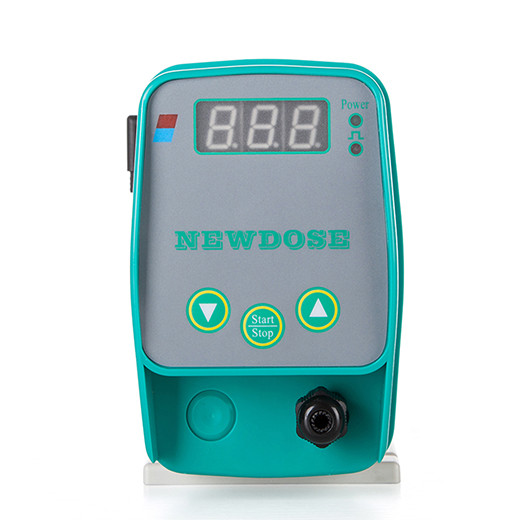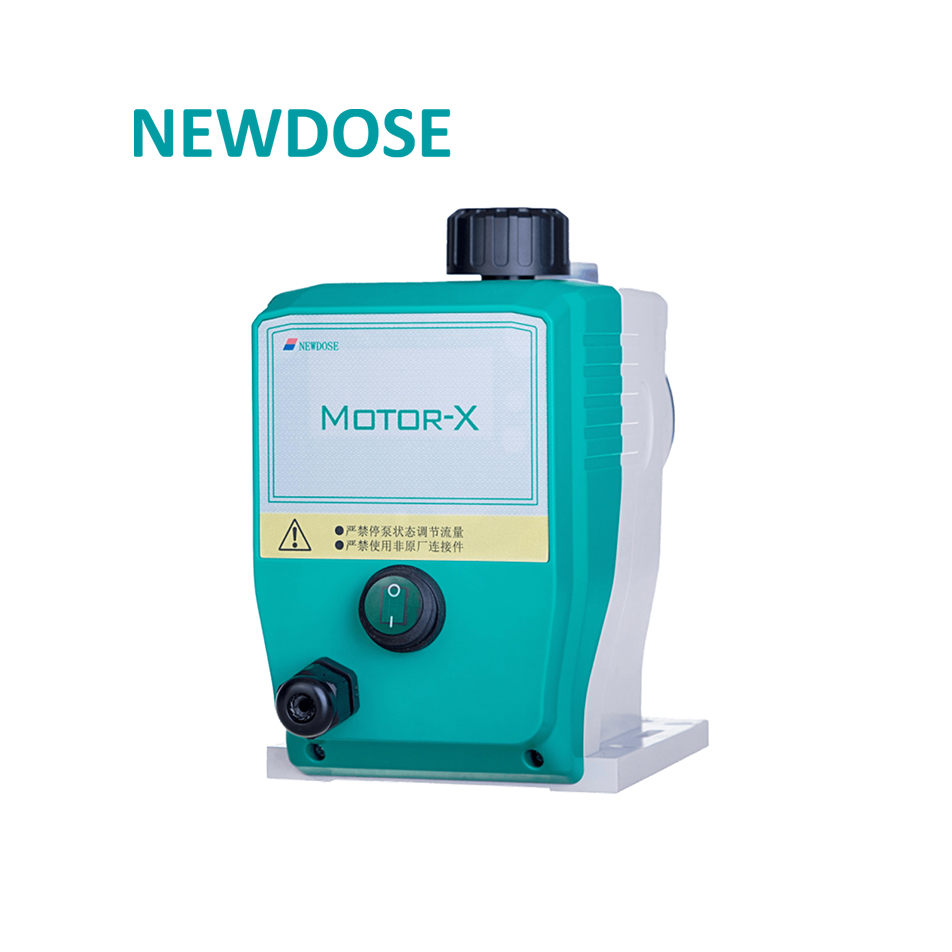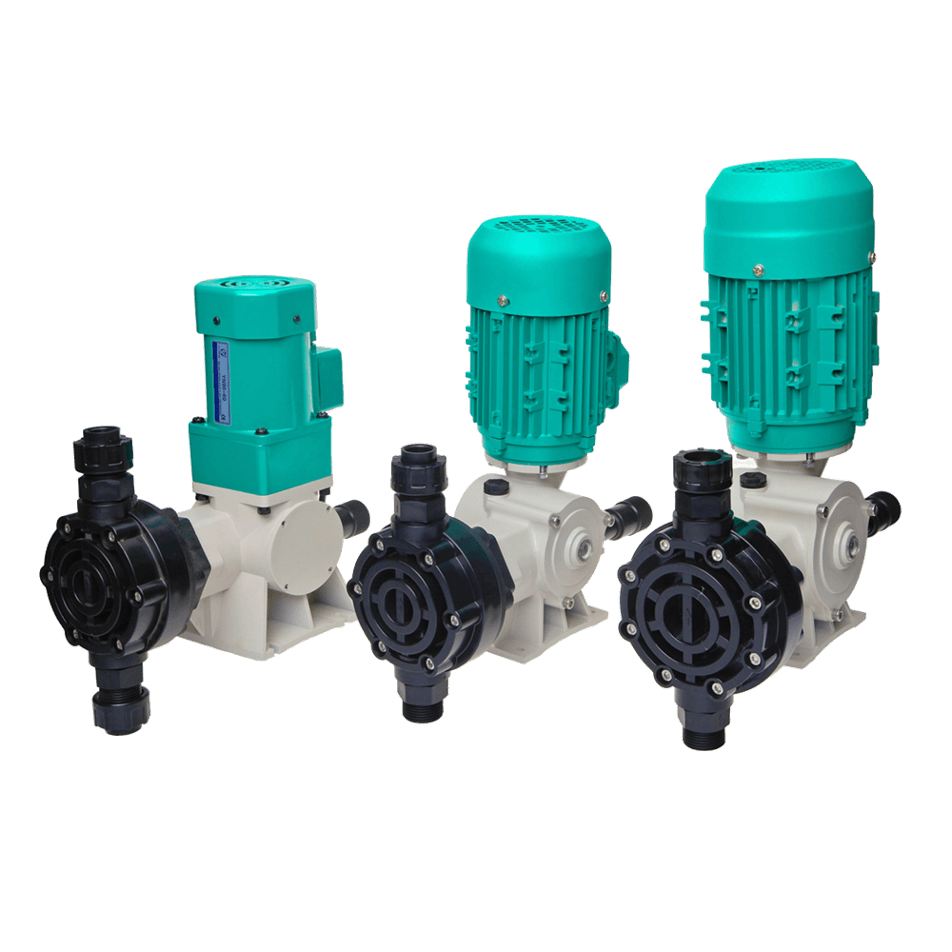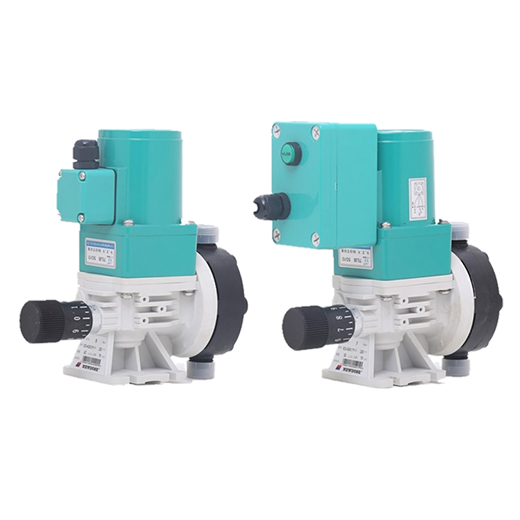The metered dose pump is a pump specially used for metering and conveying liquids. Most metered dose pumps adopt the structure of plunger pump and diaphragm pump, and the structure of gear pump is also useful, because they can maintain a constant flow regardless of discharge pressure. There are two types of metered dose pumps including adjustable and non-adjustable. The former has wider applicability. The flow is mainly adjusted by changing the stroke length, such as changing the crank radius, the position of the rear dead point and the gap between the plunger rod and the crosshead when the plunger returns. The flow can also be adjusted by changing the number of reciprocations or using two methods at the same time. Although the stroke length can be adjusted from zero to the maximum, in order to ensure the measurement accuracy, it is generally limited to the range of 30 to 100%.
Ⅰ. What is the metering accuracy of the metered dose pump
The metering accuracy of a metered dose pump refers to the accuracy of flow reproducibility, which is usually calculated at the maximum flow rate. Within the adjustment range of 10~100%, the metering accuracy of general metered dose pumps is ±1% (special metered dose pumps have higher accuracy). The main factors that affect the accuracy of metering are the sealing performance of the plunger packing and the perfection of the suction valve and the discharge valve.
The plunger metered dose pump has the advantages of high metering accuracy, wide adjustment range and high pressure, but there is leakage at the packing seal, which will affect the metering accuracy of the pump after the packing is corroded and worn.
The main advantage of the diaphragm metered dose pump is that there is no leakage, so it is particularly suitable for occasions where leakage is not allowed, such as transporting flammable, explosive, toxic and radioactive media, and can also be used to transport liquids containing solid particles, so its development is very fast.
Ⅱ. The functions of the metered dose pump
The use of metered dose pumps can complete three functions of delivery, metering and adjustment. Thereby, the production process can be managed automatically and semi-automatically. And improve product quality. Using multiple cylinders or multiple metered dose pumps, several media can also be fed into the reactor in an accurate proportion for mixing.
Metered dose pumps are increasingly used in the chemical, oil refining, pharmaceutical, food and nuclear energy industries. The efficiency of the metered dose pump is low, generally 20%, and the power is also very small.
Ⅲ. Precautions for using metered dose pump
1. When running the dosing system, there are some key points as follow.
(1) Put a little pressure;
(2) Stroke frequency;
(3) Suction height;
(4) Altitude;
(5) Corrosiveness of chemicals.
2. When the outlet of the metered dose pump is at atmospheric pressure, how to improve the repeated metering accuracy of the pump
Installing a valve spring on the discharge valve of the metered dose pump can improve repeat metering accuracy, but the most effective way to improve is to install a back pressure valve at the end of the pipeline.
3. How to adjust the back pressure valve
Never exceed the maximum working pressure of the metered dose pump.
When the metered dose pump has pressure on the suction side, the pressure on the discharge side of the pump must be at least 1 bar higher than the pressure on the suction side.
4. How to choose a suitable pulsation damper volume
Multiply the metering capacity (ml) of each stroke of the metered dose pump by 26 to obtain the minimum volume (ml) of the pulse damper required to reduce 90% of the pulsation.
5. How to set the pressure of the safety valve
The pressure of the safety valve can be adjusted within the rated working pressure range of the metered dose pump, and it is not allowed to exceed the maximum working pressure of the metered dose pump. The safety valve is designed to prevent overpressure operation of the metered dose pump. For example, if the maximum working pressure of the metered dose pump is 3bar, the pressure of the safety valve should be set to 3bar or lower to ensure the normal operation of the metered dose pump. Overpressure work is one of the main causes of damage to the metered dose pump.
6. If the liquid being transported is not water, how to calculate the suction height
Divide the rated suction height of the metered dose pump by the specific gravity of the metered liquid.
7. Under what circumstances should I use self-filling suction
(1) The metered liquid is easy to volatilize;
(2) The specific gravity of the metered liquid is relatively large;
(3) When a higher stroke frequency is required;
(4) When the metered dose pump is working in high altitude areas;
(5) In the case where a larger storage tank is required for field application, and it is not feasible to rely on the self-priming of the metered dose pump.
8. What influencing factors must be considered when the pump head measures liquid
The main considerations are the viscosity, specific gravity, vapor pressure and temperature of the liquid.
 English
English  Español
Español  한국어
한국어  français
français  Deutsch
Deutsch  русский
русский  português
português  العربية
العربية  tiếng việt
tiếng việt  Türkçe
Türkçe  ไทย
ไทย 






